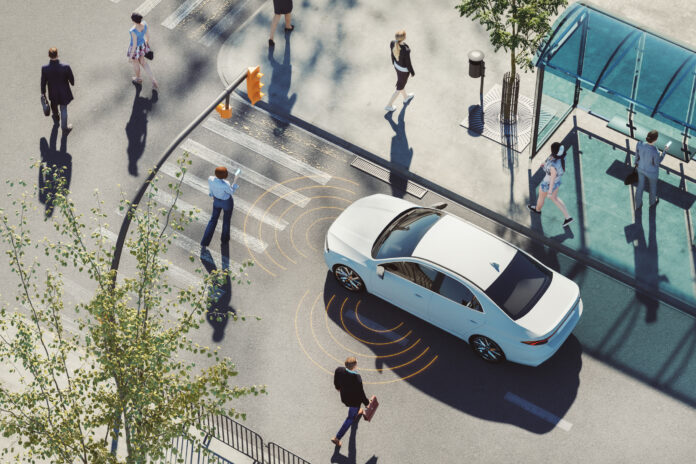
The automotive industry is undergoing a remarkable transformation, driven by the fusion of advanced technology with our daily commuting experiences. This transformation is fueled by the Internet of Things (IoT), a powerful force that has revolutionized the way we interact with our vehicles.
Let’s explore the exciting world of car connectivity, diving into how IoT is driving automotive innovations and reshaping the future of mobility.
Understanding the Internet of Things (IoT)
IoT Revolutionizes Connectivity
Before delving into car connectivity, let’s briefly unpack what IoT entails. IoT refers to the network of physical objects or “things” embedded with sensors, software, and connectivity capabilities. These objects can collect and exchange data, creating a web of interconnected devices that communicate and collaborate without human intervention.
IoT in the Automotive Context
Through sensors, connectivity, and advanced algorithms, IoT empowers cars to understand and adapt to their surroundings, anticipate our needs, and provide real-time insights that elevate our driving experience to unprecedented levels of comfort and convenience. It’s a technological revolution that not only redefines how we travel but also paves the way for a future where mobility is safer, greener, and more interconnected than ever before.
Comprehensive Connectivity: 5 Relevant IoT Systems
Car connectivity has come a long way since the advent of telematics systems that focused primarily on vehicle tracking and diagnostics. Today, IoT has expanded the horizons of car connectivity to encompass a wide array of features and functionalities.
Infotainment Systems
Modern vehicles are equipped with advanced infotainment systems that seamlessly integrate with smartphones and offer real-time navigation, music streaming, and voice-activated controls. IoT enables these systems to pull data from the cloud, ensuring up-to-date maps and content.
Advanced Driver Assistance Systems (ADAS)
IoT sensors and cameras provide the foundation for ADAS, offering features like adaptive cruise control, lane-keeping assistance, and automatic emergency braking. These systems enhance safety by actively monitoring the vehicle’s surroundings.
Vehicle-to-Vehicle (V2V) Communication
IoT allows vehicles to communicate with one another in real-time. This technology has the potential to prevent accidents by sharing information about speed, location, and road conditions.
Predictive Maintenance
IoT sensors monitor the health of various vehicle components, sending diagnostic data to manufacturers and service centers. This enables proactive maintenance, reducing downtime and repair costs.
Connected Services
Services like remote start, door locking/unlocking, and even parking assistance can be controlled via smartphone apps, thanks to IoT connectivity.
Enhanced Navigation
IoT-enhanced navigation systems can provide real-time traffic updates, suggest alternate routes, and even locate available parking spots.
The Rise of Autonomous Driving
IoT plays a pivotal role in the development of autonomous vehicles. These self-driving cars rely on a vast network of sensors, cameras, and connectivity to perceive their environment and make real-time decisions. IoT enables these vehicles to communicate with traffic signals, other vehicles, and infrastructure elements like smart road signs, ensuring a safe and efficient journey.
Data, Privacy, and Security Concerns
As cars become increasingly connected, the collection and sharing of data raise important considerations. Privacy concerns related to the gathering of driver and vehicle data must be addressed, and robust cybersecurity measures are essential to safeguard against potential threats.
The Road Ahead: 10 Features of IoT-Powered Mobility
The future of car connectivity is brimming with possibilities. Here are some key developments to anticipate:
1. 5G Connectivity
5G connectivity is poised to revolutionize data transmission speeds in the automotive industry. This leap in connectivity will underpin advanced applications in connected vehicles, ensuring seamless data exchange for a wide range of functions.
Real-world Example: BMW’s partnership with Qualcomm exemplifies 5G’s potential. BMW’s iNext electric SUV will utilize Qualcomm’s 5G Automotive Platform, enabling faster data exchange for features like autonomous driving and enhanced infotainment.
2. Edge Computing
Edge computing is set to transform IoT devices in vehicles from data collectors to sophisticated data processors. This shift reduces latency, enhances real-time decision-making, and bolsters data privacy and security.
Real-world Example: Tesla’s Full Self-Driving (FSD) technology already relies on edge computing. Tesla vehicles process data from onboard sensors locally, enabling real-time decisions for features like Autopilot and Navigate on Autopilot.
3. Blockchain for Security
Blockchain offers a secure and tamper-proof method for handling connected vehicle data. It enhances data security and privacy, which is vital in an era where data breaches pose significant risks.
Real-world Example: MOBI (Mobility Open Blockchain Initiative), supported by automakers like BMW and General Motors, explores blockchain to securely track vehicle ownership, maintenance, and provenance data, reducing fraud and ensuring transparency.
4. Mobility as a Service (MaaS)
MaaS platforms seamlessly integrate various modes of transportation into a single, comprehensive service. This not only simplifies travel planning but also promotes sustainable and efficient transportation options.
Real-world Example: Helsinki’s Whim app is a prime example. It integrates buses, trains, taxis, and bike-sharing, allowing users to plan, book, and pay for their entire journey within a single app, reducing congestion and promoting sustainable transport.
5. Vehicle-to-Everything (V2X) Communication: Smart Interaction
V2X communication enables vehicles to interact with infrastructure and other vehicles in real-time. This technology enhances safety, optimizes traffic flow, and reduces emissions.
Real-world Example: Audi’s Traffic Light Information system connects select Audi models to traffic light infrastructure. It provides real-time traffic light status to optimize vehicle speed for green lights, reducing emissions and improving traffic flow.
6. Predictive Maintenance: Minimizing Downtime
Predictive maintenance utilizes IoT sensors to monitor vehicle components and predict maintenance needs. This proactive approach reduces downtime, lowers maintenance costs, and ensures vehicles are always in optimal condition.
Real-world Example: Caterpillar’s Cat Connect technology employs IoT sensors in heavy machinery to monitor equipment health. It predicts maintenance requirements, reducing downtime and maintenance expenses.
7. In-Car Voice Assistants: Enhanced Convenience
In-car voice assistants offer hands-free control of various functions, enhancing driver convenience and reducing distractions.
Real-world Example: Amazon’s Alexa integration in Ford vehicles allows drivers to use voice commands for navigation, calls, and entertainment, promoting safer and more convenient driving.
8. Autonomous Vehicle Fleets: Driverless Mobility
Autonomous vehicle fleets, driven by IoT technology, offer on-demand transportation without human drivers. This technology is reshaping the future of mobility services.
Real-world Example: Waymo’s autonomous ride-hailing service in Phoenix, Arizona showcases IoT-powered autonomous mobility. Waymo’s vehicles, equipped with sensors and AI, offer rides to the public without human drivers, demonstrating the potential of autonomous mobility services.
9. Augmented Reality (AR) Navigation: Heads-Up Guidance
AR-powered navigation systems overlay directions and information onto the windshield, reducing the need for drivers to take their eyes off the road.
Real-world Example: The Mercedes-Benz S-Class features an AR-powered heads-up display (HUD) that overlays navigation directions and other information onto the windshield, enhancing driver awareness and safety.
10. Enhanced Energy Efficiency: Optimizing Performance
IoT sensors in vehicles optimize performance by collecting data on driving patterns and traffic conditions. This data maximizes energy efficiency and reduces environmental impact.
Real-world Example: The Toyota Prius Prime utilizes IoT sensors to optimize hybrid system performance. It collects data on driving patterns and traffic conditions to maximize fuel efficiency and electric-only driving, reducing environmental impact.
Welcoming the Auto IoT Era
Car connectivity powered by IoT is not just a technological leap; it’s a transformative shift in the automotive landscape. Vehicles are evolving into smart, connected entities capable of enhancing safety, convenience, and efficiency.
As we continue on this journey toward IoT-powered mobility, the possibilities are boundless, promising a future where our vehicles are not just modes of transportation but intelligent companions that cater to our every need on the road. Embracing these innovations responsibly, with a focus on data privacy and security, will be key to unlocking the full potential of car connectivity in the IoT era.
The road ahead is not just connected; it’s intelligent, adaptive, and exciting.




